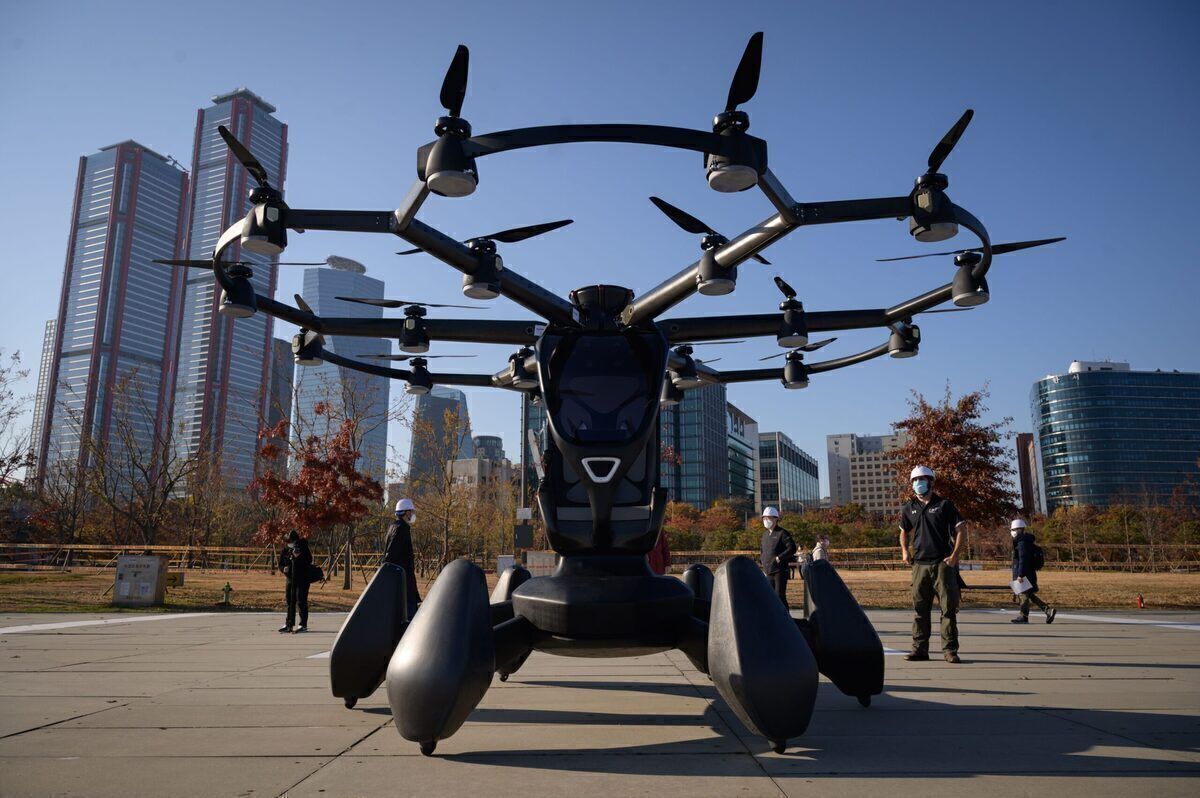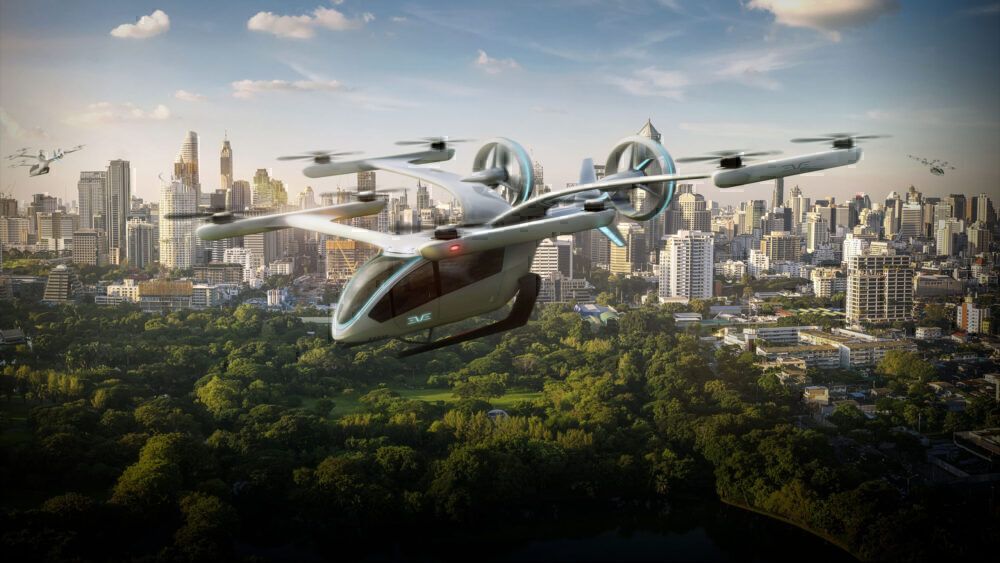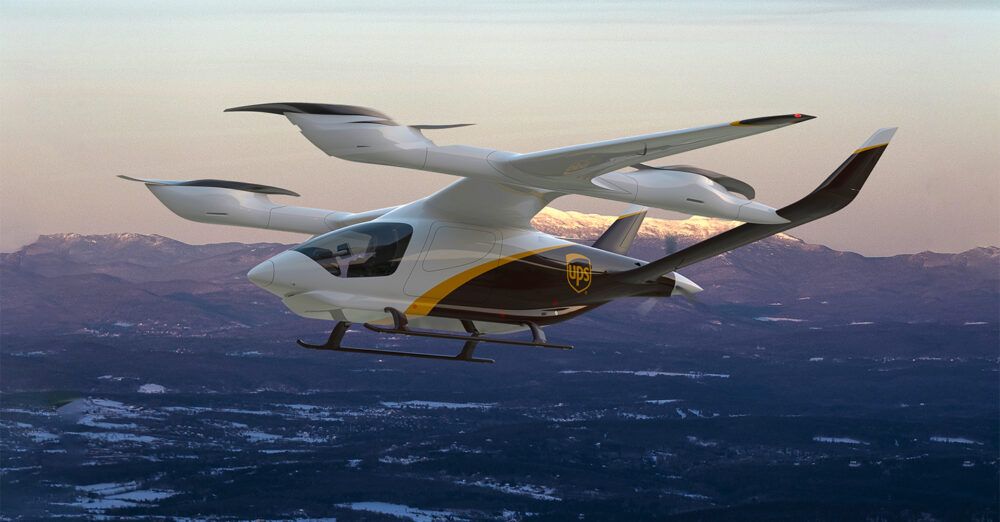eVTOL (electric vertical takeoff and landing) air taxis have been touted as the future of urban transportation. Many companies, both emerging start-ups and established manufacturers, are developing eVTOL vehicles which are expected to hit the market in just a matter of years. What does the future hold for eVTOL?
Point-to-point urban transportation
While eVTOL technology has been earmarked for heavier aircraft in the future, presently the technology is most suited to shorter, point-to-point trips. As implied by the name, eVTOL aircraft takeoff much like a helicopter without requiring a runway, making them ideal for densely populated urban areas.
Fuelled by electric power, eVTOL vehicles are considered a quiet, low-emission form of transportation that will revolutionize how we travel. With road congestion, overstretched public transport networks and other transportation issues plaguing many urban areas globally, eVTOL air taxis can provide quick, direct and clean mobility.
For example, rideshare giant Uber has calculated that a two-hour crawl through peak Sao Paulo traffic would be shortened to a swift 18-minute ride by eVTOL. Other electric air taxis have been marketed as being '100 times quieter than conventional aircraft.' In terms of pricing, models suggest that air taxis will cost roughly the same as existing rideshare services per mile.
According to Deloitte,
"Driven by a series of technological and social trends, from ridesharing and bikesharing to electric and autonomous vehicles and beyond, the future of mobility could ultimately create a more integrated transportation system that is faster, cheaper, cleaner, and safer than today’s."
Stay informed: Sign up for our daily and weekly aviation news digests.
Who are the big eVTOL players?
Many companies are understandably interested in this emerging tech, including leading airlines. The big aerospace manufacturers, Boeing and Airbus, are heavily involved in eVTOL development. Airbus has its single-seat Vahana and four-seat CityAirbus concepts in the works. Boeing is even working with luxury carmaker Porsche to develop a high-end eVTOL vehicle.
Uber established Uber Elevate back in 2016 to develop a vehicle for aerial rideshare services. The company sold Uber Elevate in December 2020 to another aviation company, Joby Aviation. Joby Aviation has teamed up with car manufacturer Toyota to develop another air taxi service. This service will involve five-seater eVTOL air taxis with a range of 150 miles and top speeds of up to 200 mph.
Several airlines are also exploring the technology, often in partnership with start-ups. Earlier this year, United Airlines announced its partnership with air mobility firm Archer to develop eVTOL vehicles. The plan is to design short-haul electric air taxis for dense urban environments, most likely to transport United passengers between cities and airports. Archer is working on its own eVTOL vehicle, which it hopes to roll out in Los Angeles by 2024.
What challenges does eVTOL face?
According to Deloitte, six key challenges must be addressed before eVTOL air taxis go mainstream:
- Safety: Establishing an operational and mechanical safety record.
- Infrastructure: Constructing vertiports, takeoff and landing zones, charging stations, etc...
- Air Traffic Management: Integrating eVTOL air traffic management with other systems.
- Technological Maturity: Creating safe and efficient tech such as collision systems, energy management and artificial intelligence.
- Psychological Barriers: Achieving popular support for unmanned aerial flight.
- Regulations: A regulatory framework such as airworthiness certifications and pilot's licenses.
In terms of expanding eVTOL technology for longer trips and larger aircraft, battery capacity is still a major hurdle. Companies looking to operate air taxi services will also have to front large expenses on infrastructures such as landing zones and vertiports.
On the plus side, the FAA released its first concept of operations for air mobility in 2020, a large stride closer to making eVTOL air taxis a reality. This early roadmap for eVTOL operations plans to establish 'UAM corridors' within cities that allow air taxis to travel without relying on air traffic control.
What do you think of the eVTOL air taxi concept? Do you think it will become a common part of transport within the next decade? Let us know your thoughts in the comments.




